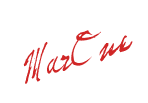Grammar Translation Method (GTM)
Somewhat
several hundred years ago Latin was the worlds’ most widely studied
foreign language. It was the dominant Language. It was the dominant language of
education, commerce, religion, and government in the western world. In the
sixteenth century ,
however, French, Italian, and English
gained in importance as a result of political changes in Europe. Latin,
therefore, is no longer a living language. Its status was an occasional subject
in school curriculum. Children entering “Grammar School” in the sixteenth, and
seventeenth, and eighteenth centuries in England were taught Latin. It was
believed that studying Latin could develop intellectual abilities especially to
exercise logical reasoning. The study of classical Latin, in which the
classical works of Virgil,
Ovid,
and Cicero were written, was also meant to learn its great philosophy. Thus,
the western world of the 17th
, 18th, and 19th centuries, foreign language learning was
associated with the learning of Latin and Greek, both supposed to promote their
speakers’ intellectuality.
Students learning
Latin were first given Latin grammar through rote learning of its rule, study
of declensions and conjugations. The parallel bilingual (Latin and English)
texts and dialog were often used. Once basic proficiency was established
students were introduced to the advanced study of grammar and rhetoric.
Textbooks
usually consisted of abstract grammar rules, list of Vocabulary, mean, sentences for
translation. Speaking was not the goal. Writing practices were dealt with
translation from native to foreign language and vice versa. By the nineteenth
century, the procedures used in the study of Latin had become
the standart way
of studying foreign language in schools.
This approach to foreign language teaching became known as the
Grammar-Translation Method (GTM). At one time it was also called Classical
Method.
Underlying
Principles
Grammar
Translation method was first devised and developed for use in secondary
schools. This approach was historically used in teaching Greek and Latin. The
approach was then generalized to teaching modern Language, including English.
It could even be called” the Grammar School Method” since its strengths and
weaknesses reflected the aspiration of the nineteenth century grammar school in
its obvious formats in different countries.
Classes
are taught in the students’ mother tongue, with little active use of the target
language. Vocabulary is taught in the form provided. Grammar instruction
provides the rules for putting words together; instruction often focuses on the
form and inflection of words. Reading of
difficult text is begun early in the course of study. Little attention is paid
to the content of texts, which are treated as exercises in grammatical
analysis. Often the only drills are exercises in translating disconnected
sentences from the target language into the mother tongue, and vice versa.
Little or no attention is given to pro nunciation
Richards and Rodgers (1993: 3-4)
mention the principles of GTM as follows:
1.
The
goal of foreign language study is to learn a language in order to read its
literature. It is believed that studying a foreign language provides student
with good mental exercise which helps develop their mind. Students will get
benefit from the mental discipline and intellectual development. Students will
grow intellectually. Though the students will probably never use the target language,
the mental exercise of learning it will be very beneficial anyway.
2.
Vocabulary
and grammar are emphasized. Reading and writing are the primary skills the
students worn on. There is little or no systematic atemption given to speaking and
listening. Pro nunciation receives
little attention.
3.
Vocabulary
selection is based solely on the reading texts used, and words are taught
through bilingual word lists, dictionary study, and memorization. In a typical
Grammar-Translation text, the grammar rules are presented with their
translation equivalents, and translation exercises prescribed.
4.
The
sentence is the basic unit of teaching and language practice. Much of the
lesson is devoted to translating sentences into and out of the target language,
and it is the focus on the sentences that is a distinctive feature of the
method.
5.
Accuracy
is emphasized. Students are expected to attain high standarts in translation.
6.
Grammar
is taught deductively; that is students are given grammar rules and examples
and are told to memorize them, and then asked to apply the rules to other
examples. They also learn grammatical paradigms such as verb conjugations. They memorize native language equivalents for
foreign language vocabulary.
7.
The
student’s native language is the medium of instruction. The meaning of the
target language is made clear by translating it into the student’s native
language. It is also used to explain new items and to make comparisons between
the foreign and language and the student’s native Language
Classroom
Techniques
1.
The
Rules of the Teacher and the Student
The roles of the
teacher are very traditional .
The teacher is the authority in the classroom. The students do what the teacher
says to them. Thus, most interaction in the classroom is from the teacher to
the students. There is little student initiation and little student interaction.
2.
Translation
of a Literary Passage as the Main Classroom Activity
Students translate a
reading passage from the target language into their native language. The
reading passage then provides the focus for several classes: vocabulary and
grammatical structures in the passage mat be excerpted from some work from the
target literature, or the teacher may write the passage carefully designed to
include particular grammar rules and vocabulary. The translation may be written
or spoken or both. Students should not translate idioms and the like literally,
but rather in a way that shows that they understand their meaning.
3.
Reading
Comprehension Activity
Students answer
questions in the target language based on their understanding of the reading
passage. The teacher gives the students a topic to write about in the target
language. The topic is based upon some aspects of the reading passage of the
lesson. Sometimes, instead of writing a composition, students are asked to
prepare a summary or précis of the reading passage.
4.
Vocabulary
Activity
Students are given
lists of target language vocabulary and their native language equivalents and
are asked to memorized them. Some vocabulary activities are synonym/antonym and
fill in the blank. Students are given one set of words and are asked to find
antonyms in the reading passage. A similar exercise could be done by asking
students to find synonyms for a particular set of words. One student might be
asked ti define a set of words based on their understanding of them as they
occur in reading passage. Another type of exercise that asks students to work
with the vocabulary of the passage is also possible, such as fill in the
blanks. Students are given a series of sentences with words missing. They fill
in the blanks with new vocabulary items or with items of a particular grammar
type, such as prepositions or verbs with different sentences. In order to show
that students understand the meaning and use of a new vocabulary items, they
make up sentences in which they use the new words.
5.
Grammar
Activity
Grammar is taught
deductively, that is, grammar rules are presented with examples. Exceptions to
each rule, they are asked to apply it to some different examples. Students are
also required to memorize grammatical rules and grammatical paradigms such as
verb conjugations.
Closing
Grammar Translation Method dominated European and foreign language teaching
from 1840 to 1940s. It is true to say that this method has no underlying
theory. There is no literature which presents rationale for it, or that
attempts to relate it to issues in linguistic, psychology, or educational
theory.
In the mid-nineteenth century, several reactions against GTM gradually
developed in European countries. Some criticizes that this method often creates
frustation for students by a tedious experience of memorizing endless list of
unusable grammar rules and vocabulary, and the limitations of practice
tecqniques never emancipate the learner from the dominance of the first
language.
The reform movement laid the foundations for the development of new ways of
teaching languages. There are several factors contributed to the increased need
for teaching methodologies other than GTM such as: (1) The increased
opportunities for communication among European people have created a demand for
oral proficiency in foreign languages. (2) Language teachers or language teaching specialists began to pay
great attention to the way or the methods modern languages were being taught in
secondary schools. Some of these specialists were C.Marcel, and F.Gouin. The
created a specific method for reforming the teaching of modern languages. Their
methods of teaching languages later became embryo of new teaching method called
Direct Method.



+Books.png)
.jpg)
.jpg)







.jpg)
.jpg)

.jpg)



